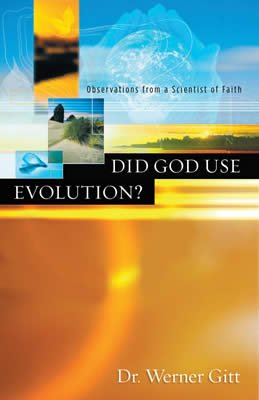
5.4 What Is Life? The Informational View (OB19)
Matter and energy are necessary aspects of living forms, but they do not fundamentally distinguish between living and inanimate systems. “Information” is, however, a basic characteristic of all sentient beings. This does not mean that life has now been explained, but a very important factor has been mentioned. Even at the lowest level, in the case of viroids, which are simpler than viruses, where we have single molecules of nucleic acid, information is the distinguishing entity. Without a doubt, the most complex information processing system is a human being. Even when applying the theorems mentioned initially, we can now formulate a further equation, L2, contrasting with L1:
Life = material part (physical and chemical aspects) + + non-material part (information having an intellectual source) (L2)
This formula comprises a radical extension over and against basic assumption E3 of evolution, but even L2 is not sufficient, because it cannot explain all life phenomena (as, for example, the shaping of bodily growth, consciousness, and responsibility). This author introduced three classes of information that are present in sentient organisms [in G7, p. 136–139]:
- Structural information: Although not sufficient for explaining the origin of an organism, genetic information is essential. It contains the individual constructional blueprint for every life-form, and ensures its effective transmission from generation to generation. In every grain of wheat, it is responsible for the growth of a new plant that in its turn produces wheat grains as seed. In the same way, the merging of male sperm cells and female ova determines the genetic combination of the new person. The embryo cannot develop without the accompanying constructional information. This specific information is decisive for the development of the appropriate structures, even if it is not sufficient. By using only a few similar building blocks (20 amino acids), the program determines whether an oak, a rose, a butterfly, a swallow, a horse, or a man is constructed. The most important part of transferring the genotype is not the essential material interest, but the information within, and this is non-material.
- Operational information: In all the different kinds of life-forms
there is an immense variety of information processing systems
that drive the internal “operational” processes:
- All the required operational and structural materials must be synthesized inside the cells. In the human body alone, fifty thousand different proteins have to be built up according to exact chemical and procedural requirements. If the specifications of only one of these proteins are absent from the controlling program, it could be dangerous or lethal (e.g., insulin).
- The nervous system serves as the communication network for all relevant information for controlling the harmonious operation of all organic systems, as well as for controlling the movements of the limbs.
- Hormones carry chemical messages for controlling certain growth processes and for the activation of numerous physiological functions.
- Communicative information: Communication, especially with
others of the same kind, plays a central role in the life of organisms.
For this purpose, systems for the transmission and
reception of signals exist which certainly comprise some of the
most amazing features of creation. In the animal kingdom,
communication systems essentially serve the following purposes:
sexual courtship (e.g., the mating calls of birds, and the
sexual secretions of insects), communicating a source of food
(bee dances), detection of enemies (the pheromones of ants),
the sharing of tasks among families or colonies (like ants and
bees), and for befriending other organisms (ants appease the
caterpillars of the butterfly “Blue” by allomones). The variety
and sensitivity of the various receptors are astounding. Some
quantitative examples:
- Certain grasshoppers can detect soil vibrations having an amplitude of only 5 · 10-10 cm. That is 1/25 of the diameter of the first electron orbit of a hydrogen atom.
- The threshold of audibility of the human ear is 10-12 watts per square meter. By this it reaches the physically possible limits.
- The heat-sensitive organ (pit organ) of the Malayan moccasin snake can detect a change in temperature of 1/1000°C, independent of the temperature of its own body.
- Even a single molecule of the pheromone bombykol secreted by the female bombyx mori can still be detected by the male’s antenna. In this respect, one should remember that one cubic centimeter of air contains 26.9 · 1018 molecules (or nearly 27 million billion).
Human speech is distinctly different from all animal communication systems. Articulated speech is a very versatile instrument, which not only serves to convey meaning, but it is the foundation of all our thoughts and mental activities. The German language employs more than half a million words and it is impossible to calculate the number of possible combinations of the numerous forms of the words into sentences and paragraphs that our power of speech is capable of. The number of expressible thoughts is also exceedingly large. No animal communication system possesses such creative possibilities; they can only be used for strictly limited, “burned in” forms of expression.
Nearly all information processes are controlled by the brain. It is the most complex but also the least understood organ. Most biological functions cannot proceed without the brain. If the brain is dead, then the whole organism also dies (cerebral death; compare OB5).
All these information systems require an intellectual source according to the information theorems mentioned above. The endeavors of evolutionists to explain life as a purely mechanistic phenomenon gloss over these facts and ignore these verifiable theorems.
Did God Use Evolution?
According to the view of theistic evolution, God started the process of evolution and guided and steered it over millions of years. As an information scientist, Werner Gitt critically analyzes and rejects the assumptions and consequences of the doctrine of theistic evolution.
Read OnlineRecommended Resources

Answers in Genesis is an apologetics ministry, dedicated to helping Christians defend their faith and proclaim the good news of Jesus Christ.
- Customer Service 800.778.3390
- © 2024 Answers in Genesis




